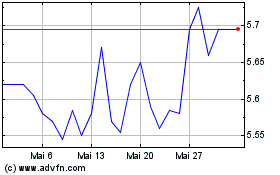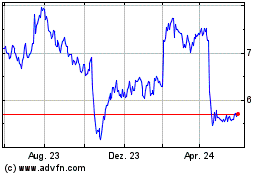TomTom (TOM2), the location technology specialist, today releases
the 14th edition of its TomTom Traffic Index, an annual report that
provides a unique overview on global traffic trends.
This year’s edition features 500 cities across
62 countries on 6 continents, making it the most robust and
complete analysis ever, made available to any observer. The TomTom
Traffic Index uses unified metrics to rank these cities based on
their average travel time, as well as congestion level. It gives
city-by-city information that can help urban planners and
policymakers tackle traffic-related challenges and make informed
decisions for a better tomorrow.
Global trends in 2024
In 2024, 379 cities out of 500 (76%) saw their
overall average speed decrease compared to 2023. Despite this
decrease, average speeds under optimal conditions, characterized by
free-flowing traffic, remained stable and even showed slight
improvements in most cities. This suggests that the observed
deterioration in average speeds is primarily driven by dynamic
factors affecting congestion levels, rather than changes in road
infrastructure.
The differences in travel times (or average
speeds) across cities stem from a combination of static and dynamic
factors that significantly influence traffic flow and overall
driving conditions.
Static factors are fixed
aspects of a city's infrastructure and planning that influence
travel times. The design of road networks, including highways,
arterial roads, and residential streets, impacts traffic flow.
Narrow streets, one-way systems, and complex intersections can slow
movement, while wider, multi-lane roads support smoother flow.
Speed limits, often set for safety, and high-density areas with
frequent stops or pedestrian zones also affect driving speeds.
Traffic light synchronization, roundabouts, and stop signs further
shape navigation efficiency.
Complementing these static factors are
dynamic factors, that is ever-evolving conditions
that impact traffic flow on a daily basis. Traffic congestion
during peak hours or seasonal traffic surges lead to higher vehicle
density, causing delays; unexpected obstructions, such as car
accidents, construction projects and road closures can create
bottlenecks, disrupt normal traffic patterns, and lead to rerouted
traffic. Finally, rain, snow, or fog, by reducing visibility and
traction, force drivers to adapt their driving style. Highest
levels of congestion are often reached on days when weather
conditions were particularly bad.
In 2024, Barranquilla in Colombia was the city
with the lowest average speed. The average speed over the year is
10.3 mph, which means that it takes almost 35 minutes on average to
complete a simple 6-mile journey. Three Indian cities feature in
the top 5 list of slowest cities. London, the first European city
in the ranking, is in 5th position, with an average speed of 11.2
mph in the city. Yet the English capital is only 150th in the
congestion ranking, which measures only the dynamic factors of slow
speed.
The level of congestion only takes into account
the dynamic factors that lower the average speed in a city. With a
congestion rate of 52%, Mexico City is the city in which traffic
has the greatest impact on the deterioration of journey times
compared with ideal traffic conditions. This means that on all
routes surveyed throughout the year on the entire road network,
journey times are 52% longer than those recorded in Mexico City
when traffic was free-flowing.
Because of rush-hour traffic in Lima, Peru, and
Dublin, Ireland, motorists in these two cities lost an average of
150 hours in traffic jams (on a typical 6-mile journey, made every
working day in the morning and evening) - almost a week's worth
over the year.
Traffic data to understand how cities
move
As urban areas continue to expand, traffic
congestion is becoming an increasingly pressing issue that needs to
be addressed. "The combination of population and economic growth is
putting significant strain on our transportation networks," said
Ralf-Peter Schäfer, Vice President of Traffic at TomTom. "Outdated
infrastructure and inefficient road planning fail to keep pace with
demand. Additionally, the surge in e-commerce has led to a rise in
freight traffic, further complicating the situation. Without a
shift towards more regulation and sustainable transportation
options, we risk worsening congestion that impacts everyone in our
cities.
“Urban mobility is the result of the interplay
between static factors that determine the potential for efficient
travel, and dynamic factors that create variations and disruptions
experienced by road users,” adds Schäffer. “Our traffic data allows
urban planners understand these factors, for them to design cities
that balance mobility, safety, and accessibility."
New year, new methodology
The TomTom Traffic Index utilizes floating car
data collected from various sources to enhance our traffic
services. For this new edition, TomTom analyzed a representative
sample covering 458 billion miles driven in 2024, allowing to track
and demonstrate how traffic patterns have changed in cities
worldwide.
In the USA, TomTom's extensive coverage enables
its data experts to estimate total traffic volumes. This year's
Traffic Index provides an overview of total trip mileage across the
country, broken down by city. These insights allow traffic analysts
to quantify travel demand, calculate time lost to congestion, and
assess CO2 emissions in urban areas.
For the latest edition of the Traffic Index,
TomTom has revised its method for defining city centers and
metropolitan areas to better reflect actual traffic conditions and
enable standardized comparisons between cities. TomTom maps all
traffic flows on a hexagonal grid system to identify interconnected
areas within the city; the “city center” is defined as the cluster
of densest hexagons that account for 20% of all trips, while the
“metropolitan area” encompasses all hexagons representing 80% of
all trips within the city.
About TomTom:
Billions of data points. Millions of sources.
Thousands of communities.
We are the mapmaker bringing it all together to
build the world’s smartest map. We provide location data and
technology to drivers, carmakers, businesses and developers. Our
application-ready maps, routing, real-time traffic, APIs and SDKs
empower the dreamers and doers to move our world forward.
Headquartered in Amsterdam with 3,700 employees
around the globe, TomTom has been shaping the future of mobility
for over 30 years.
www.tomtom.com
For further
information:
Media Relations
mediarelations@tomtom.com
Photos accompanying this announcement are
available
at:https://www.globenewswire.com/NewsRoom/AttachmentNg/85c4b841-966c-4a3d-b2ee-66816cba2b41https://www.globenewswire.com/NewsRoom/AttachmentNg/092e0c83-b816-498d-b276-8a3cb5ff4977https://www.globenewswire.com/NewsRoom/AttachmentNg/f63238bd-8ea0-49af-b945-13d5dce0cbd1https://www.globenewswire.com/NewsRoom/AttachmentNg/b5b6ff54-9331-4df3-a8f6-6273507ef019
Tomtom NV (EU:TOM2)
Historical Stock Chart
Von Dez 2024 bis Jan 2025

Tomtom NV (EU:TOM2)
Historical Stock Chart
Von Jan 2024 bis Jan 2025
